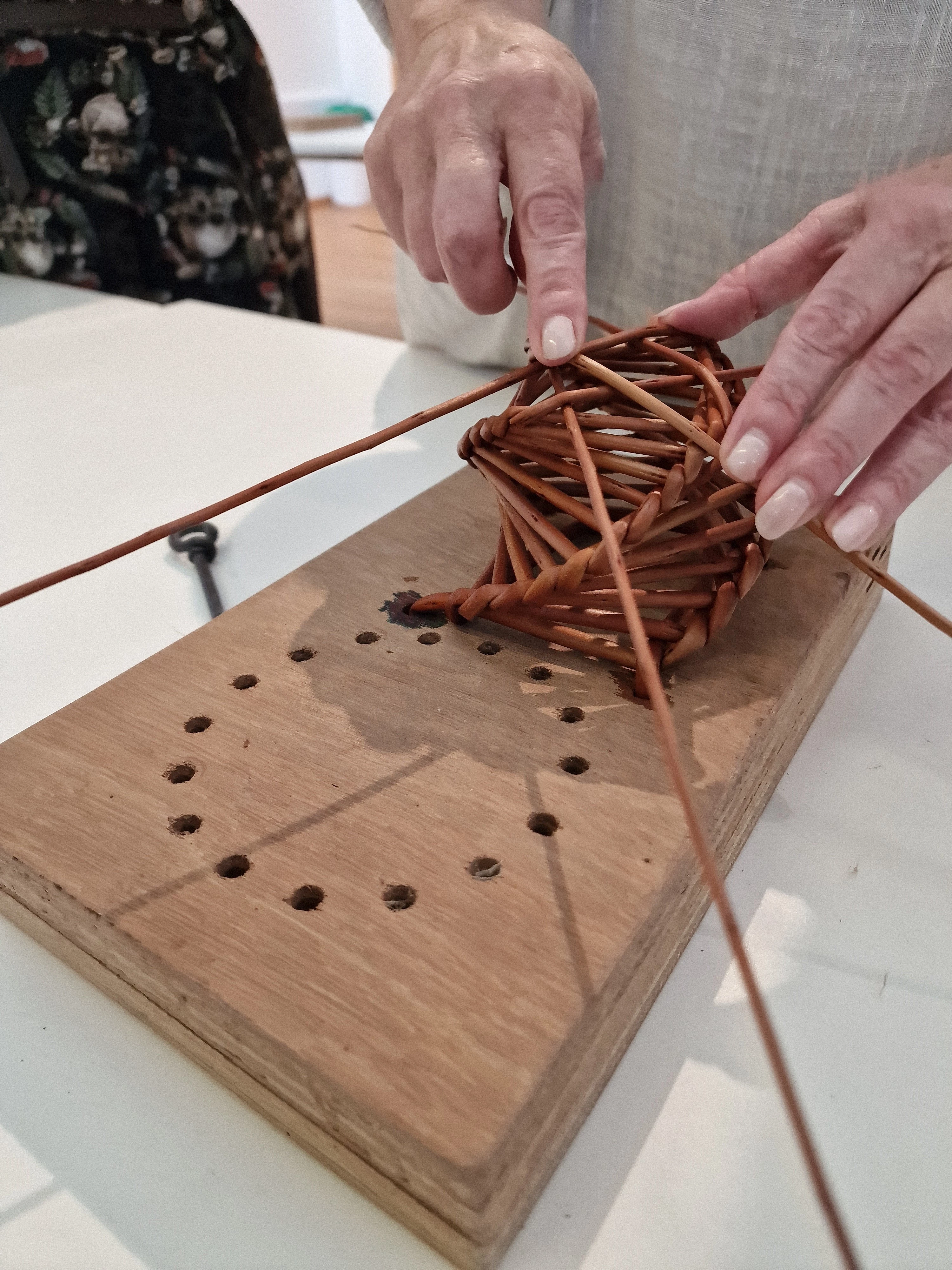GRAFT Ionawr
, 21 Mawrth 2024
“Waeth pa mor hir y gaeaf, mae’r gwanwyn yn sicr o ddilyn”.
I lawer, Mawrth yw'r mis i ddechrau hau, plannu a chyffroi am flwyddyn yn llawn cynhaeaf. Ond dyw gwirfoddolwyr GRAFT heb aros a disgwyl am fis Mawrth – maen nhw wedi palu ’mlaen drwy dywydd oer y gaeaf yn tacluso a pharatoi’r ardd ar gyfer y flwyddyn i ddod.
Ar ôl ychydig wythnosau o ymlacio, roedden ni nol ar 12 ac 19 Ionawr. Gyda’r tywydd garw a’r toriadau pŵer yn yr Amgueddfa dyma ni’n cadw at waith cynnal a chadw, gan glirio rhai o’n gwelyau uchel a pharatoi gwelyau i’w plannu yn ddiweddarach yn y flwyddyn. Tasg fwy cyffrous oedd trefnu’r holl hadau yn ôl y mis [Cyngor Craff] wnaeth ein helpu i gynllunio pa hadau oedd angen eu prynu gan ein cyflenwyr (Real Seeds, a’r Incredible Seed Hub) a threfnu amserlen dyfu y flwyddyn i ddod.
Dyma ni hefyd yn clirio a thocio’r Fedwen a phlannu rhywfaint o ddraenen ddu a draenen wen. Bydd hyn yn gwneud y clawdd yn fwy deniadol i rywogaethau bywyd gwyllt (a gallwn ni hefyd gasglu mwyar blasus).
Compost campus! Mae compost mor bwysig i'r ardd am lawer o resymau. Mae'n lleihau gwastraff a thirlenwi ac arbed dŵr, ac yn cyfoethogi'r pridd ac ychwanegu cymaint o ficro-organebau. Mae'n wych i'r amgylchedd – drwy gompostio gartref rydych chi’n lleihau eich ôl troed carbon drwy beidio â phrynu gwrtaith ffatri. [Cyngor Craff] Pethau da i’w taflu i’r pentwr compost yw: sborion ffrwythau a llysiau, gwaddod coffi, cregyn wyau (ond maen nhw’n cymryd amser i bydru), toriadau glaswellt a phlanhigion. PEIDIWCH ychwanegu: bara, cynhyrchion llaeth, reis ac unrhyw beth sydd ddim yn fioddiraddadwy, fel plastigion, papur sgleiniog, sticeri a rhai brandiau bagiau te.
Arweiniodd Annie y gwirfoddolwyr GRAFT a thrigolion Gofal Dydd West Cross i wagio a hidlo’r pentwr compost, a thynnu mwydod allan i'w hychwanegu eto.
Bob mis neu ddau bydda i’n rhannu’r newyddion diweddaraf am ein gwaith yn yr ardd. Byddwn ni’n rhannu unrhyw beth rydyn ni’n ei ddysgu, beth sydd wedi gweithio’n dda (a ddim cystal) ac unrhyw awgrymiadau i arddwyr (hen a newydd) eu defnyddio yn eich mannau gwyrdd eich hun. Bydda i hefyd yn cynnwys rysáit tymhorol o The Shared Plate gan ddefnyddio cynhwysion GRAFT.




















